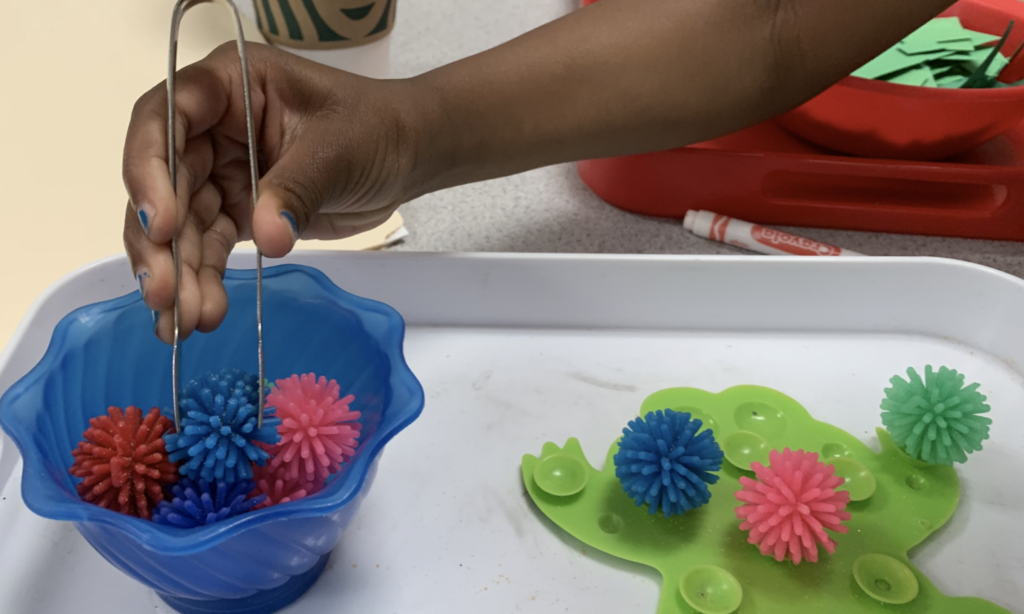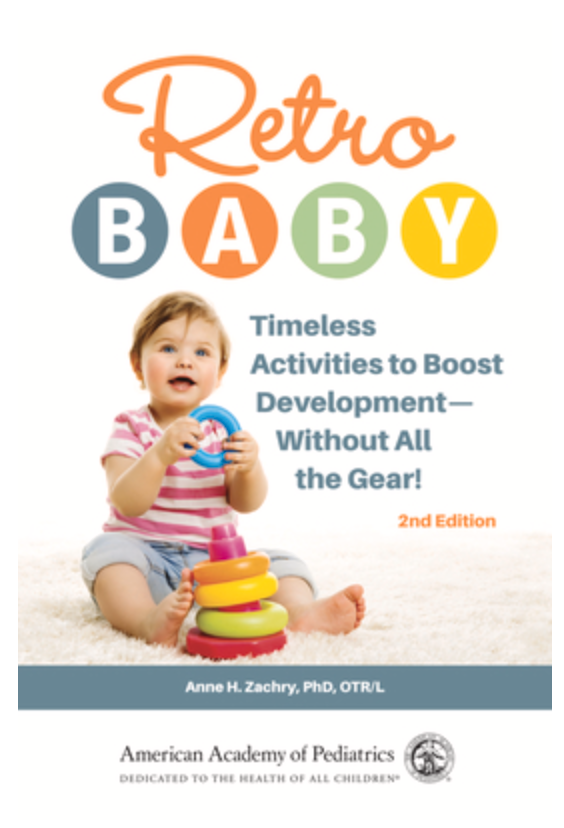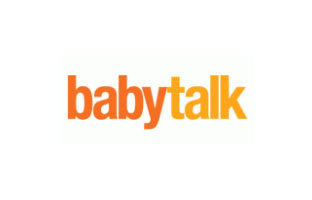Kids love this fun fine motor tong activity! The great thing about this activity is that it helps develop those fine motor skills that are important for writing, typing, using scissors, and fastening fasteners on clothing. Tong activities are also great for developing manipulation skills on the thumb, index, and middle finger side of the hand while working on stability on the pinkie and ring fingers.
For this activity, you will need the following:
Non-Slip Children’s Bathtub Appliques with Suction Cups
Mini-Tongs
Various Sizes of Pom Pom Balls

Have the child use the tongs to grasp pom poms and place them in the suction cups.

Watch the video below of this child carrying out the activity! What a nice grasp and great control!
Fine Motor Tong Activity
This activity is also a wonderful way to work on counting and matching and naming colors. Have fun!









